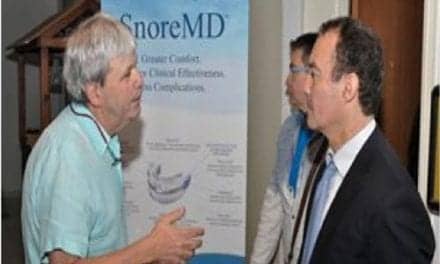The American Academy of Sleep Medicine (AASM) released an analysis, titled “Hidden health crisis costing America billions,” that reveals the cost of undiagnosed obstructive sleep apnea.A companion report was also released titled “In an age of constant activity, the solution to improving the nation’s health may lie in helping it sleep better,” which summarizes the results of an online survey completed by patients currently being treated for obstructive sleep apnea (OSA). The reports are available for free download on the AASM website. Both reports were commissioned by the AASM and prepared by the global research and consulting firm Frost & Sullivan.
Frost & Sullivan estimates that OSA afflicts 29.4 million American men and women, which represents 12% of the US adult population. They also calculated that diagnosing and treating every patient in the US who has sleep apnea would produce an annual economic savings of $100.1 billion.
Treating sleep apnea improves productivity and safety while reducing health care utilization, notes AASM immediate past president Nathaniel Watson, MD, MSc. His editorial about the report is published in the August issue of the Journal of Clinical Sleep Medicine.
Frost & Sullivan calculated that the annual economic burden of undiagnosed sleep apnea among US adults is approximately $149.6 billion. The estimated costs include $86.9 billion in lost productivity, $26.2 billion in motor vehicle accidents, and $6.5 billion in workplace accidents. Untreated sleep apnea also increases the risk of costly health complications such as hypertension, heart disease, diabetes, and depression. The report estimates that undiagnosed sleep apnea also costs $30 billion annually in increased healthcare utilization and medication costs related to these comorbid health risks.
“The high quality, patient-centered care provided by board-certified sleep medicine physicians can significantly reduce the health and economic burdens of sleep apnea,” says AASM president Ronald Chervin, MD, MS, in a release.
The companion report was based on a survey of 506 patients who are currently being treated for OSA. Results show a variety of positive impacts on patient health and quality of life when patients are treated for their OSA, including better sleep, greater productivity, and a reported 40% decline in workplace absences. Approximately 78% of patients reported that sleep apnea treatment was a good investment.
“Patients often report that they feel like a new person after receiving treatment for sleep apnea,” says Chervin. “Restoring and maintaining healthy sleep is essential for the achievement of optimal health. We encourage people to seek care from a board-certified sleep medicine physician if they experience any symptoms of a sleep disorder.”
In order to prepare these reports, Frost & Sullivan, interviewed key opinion leaders with specialties in economics, sleep medicine, productivity, mental health, and accidents. The Frost & Sullivan research team also reviewed more than 100 studies on the impact of sleep apnea and constructed detailed financial models leveraging collected research, results from a survey of 506 patients, and treatment fees pulled from public sources including the Centers for Medicare & Medicaid Services (CMS) fee schedules.





